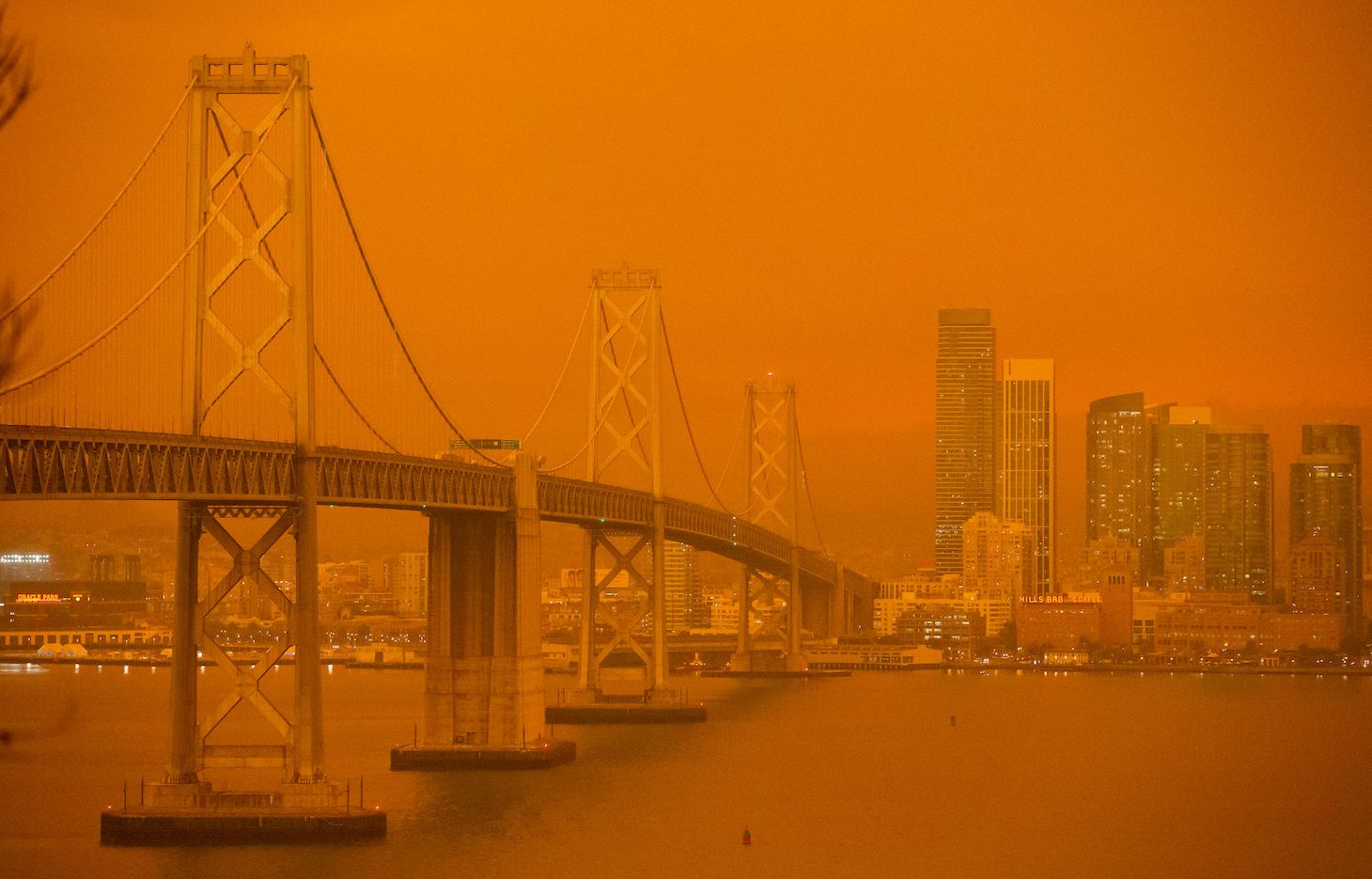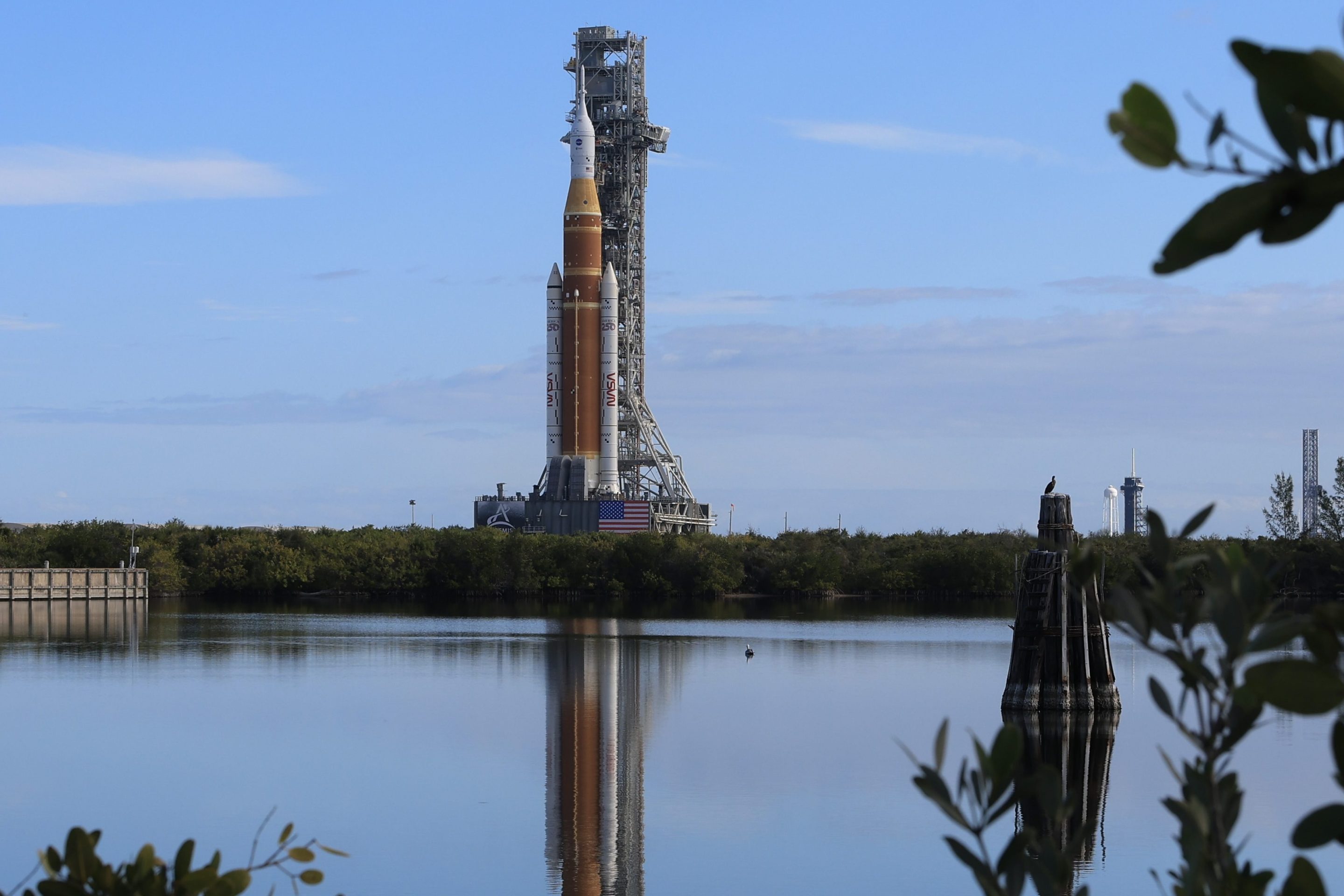The single most disorienting development in California's ongoing, unbroken month of fire came last week, with the sudden announcement that the largest fire in recorded state history was actively burning in the far northern reaches of the state. It's not that the August Complex fire started on Sept. 10 and grew to a size larger than Rhode Island. Rather, 37 distinct fires sparked by dry lightning strikes on Aug. 16 had finally merged into a unified blaze more than twice the size of 2018's Mendocino Complex fire. The third and fourth-largest fires in the history of the state are also currently burning. The one now raging in Plumas County could be bound for the all-time top-five as well.
Perhaps more disorienting still is the inevitability that contextualizing the 2020 fires within California history is futile, given that we will only have to revise that history next year, and the year after, and the year after that. The cycle of incineration is inarguably speeding up. An entire time zone's air is presently a poisonous soup. People living in the Bay Area hadn't really seen the sun in a month until yesterday.
Fire, as any story you read about the subject will tell you, has been an ever-present part of the natural and managed landscape of California for hundreds of years. Fires directly adjacent to population centers and of this explosive magnitude have never been part of any landscape. There's ample doomdata out there to tell you that what's happening now is of an unforeseen intensity, or one could also, uh, take a look outside. The takeaway is as apparent as it is stark: climate change is here, right now, to change our lives forever.
But that's a truth scarcely contested anymore (that is, not by anyone besides people whose job it is to lie to you), and as overwhelming as the new paradigm is, it's essential to understand our bleak new reality not simply as an end product of globe- and century-spanning forces beyond our control. California's crisis is and has been actively produced and maintained. This is what global warming looks like, but it's also what neglect and malfeasance look like. For a full picture of a state walking backwards into a small apocalypse, it helps to have a sense of the science, but it's much more important to understand power.
As for the science: In mid-August, a literal perfect storm smashed northern California. As a relentless summer heatwave assaulted the state's feeble and perpetually teetering power grid, an angry high-pressure storm cell hit the state. Over 12,000 lightning strikes sparked at least 585 fires in a three-day period, per the Los Angeles Times, while the bulk of the precipitation held in clouds evaporated before it could reach the ground and squelch those nascent fires. Instead, high winds catalyzed explosive growth, and the SCU, LNU, and CZU Lightning Complex fires came to life just outside of San Jose, Vacaville, and Santa Cruz, respectively. California's oldest state park was torched, along with the houses of several friends and almost one million acres.
Apocalyptic as this sounds, dry lightning clusters have been responsible for some of the state's worst fire seasons for decades, most recently in 2008. The difference this year is not of kind, but of degree. "Megafires" were statistically anomalous a decade ago; there are a dozen burning in California, Oregon, and Washington right now as you read this. When I wrote about the last batch of megafires in 2018, I came to the conclusion that this was a "new normal." Philip Duffy of the Woodwell Climate Research Center explicitly pushed back on that phrase in a Sept. 10 New York Times story, making that point that conceiving of today's fire regime in static terms is incompatible with a problem that's distinguished by its acceleration.
In practice, this is what that acceleration looks like.
Today I was flying from San Jose to Las Vegas on SWA & I looked out my window & I saw this cloud. I l found out that it is a cumulonimbus flammagenitus cloud aka pyrocumulonimbus cloud, a type of cloud that forms above a source of heat, such as a wildfire #CreekFire pic.twitter.com/HCqyWiHpNx
— Thalia Dockery (@SweetBrown_Shug) September 6, 2020
As the lightning complex fires near Bay Area cities dwindled, the Creek fire exploded to life in Fresno County, necessitating the immediate airlift rescue of over 200 people. The word "exploded" is only barely hyperbolic in this case, since it ejected what a NASA scientist estimated could be the largest cloud of its kind ever seen in the United States. The National Weather Service warned that the quantity and quality of smoke was such that the effects were now beyond the scope of their models. A Villeneuve-ian fallout cloud engulfed San Francisco, providing a dystopian and appropriately uncanny visual for a problem whose scale is almost incomprehensible.
Meanwhile, similarly violent fires began in Oregon, prompting the evacuations of over 500,000 people, which is 13 percent of the entire population of the state. The sudden eruption of mass quantities of ash and smoke into the sky blocked out all blue light from the sun, which led to horrifying ruby skies. Over 35 people are dead, with dozens more reported missing. Air qualities across the state exceeded the EPA's 500-point AQI scale by some 200 points, and even now, a week later, it's hard to find anything below the "Hazardous" range anywhere along the I-5 corridor.
This would all be catastrophic even if the USA was not currently in the throes of the world's worst outbreak of a respiratory pandemic, but unfortunately that is also happening. Evacuating is a much more fraught proposition as a result. Everyone's underlying health conditions are now doubly exacerbated, and a medical and social safety net already in the process of failing a stress test is now strained even further. In California as in many other places, institutions were collapsing even before absorbing these massive, simultaneous shocks, albeit sometimes in ways too subtle or slow to notice. The interconnected failure is now impossible to miss.
Take the case of California's corps of inmate firefighters, for instance. The state has exploited prison labor during wildfire season for decades, but that morally dubious reserve of human capital is now facing its harshest challenge. With the largest infection clusters found in the country found in prisons, incarcerated people have already borne the brunt of the COVID crisis more than any other group. California awards a 2-for-1 time credit to those who serve on fire crews, as well as a maximum of 29 dollars and 12 cents per day for a 24-hour shift. Until last Friday, those who risked their lives for less than 30 bucks were not even eligible to apply for jobs as full-time firefighters. This program has been around since World War II, and has become so essential to the state's fire defense that current VP nominee and former California Attorney General Kamala Harris infamously argued against expanding the 2-for-1 credit to other programs—the supply of incarcerated firefighters is too vital to jeopardize. You can already guess where this is heading. Cal Fire officials noted last month that a shortage of inmate fire crews brought about by COVID-motivated early releases was hampering their ability to contain the lightning fires.
Those incarcerated people working the line on 48-hour shifts came to mind as California Governor Gavin Newsom stood in the ashes of the North Complex fire and delivered an impassioned speech about how the fires were a message that climate change was real and needed to be confronted head-on; Newsom suggested that the confrontation should take the form of voting out politicians at the state and federal levels who do not acknowledge the challenges created by the changing climate. Everything in the speech would make sense only if the single most powerful person in the state were not giving it in his capacity as the single most powerful person in the state. Is a state reliant on emergency-term, unpaid labor from its most pandemic-impacted population really a state that is seriously confronting the destructive effects of wildfires and climate change?
Climate change is real. pic.twitter.com/iy1uuRpyQr
— Gavin Newsom (@GavinNewsom) September 15, 2020
You barely need to dig into the relevant parts of Newsom's record—though he did shock-doctrine in hundreds of new fracking permits this year just after the pandemic hit—to see what's so nauseating and stupefying about a powerful elected official pointing at climate change and saying, "Someone should do something!" The bone-deep cynicism of cutting this promo while essentially standing in an open grave is appalling on its own, but it's the idea that power owes citizens nothing that fucks me up. The tragedy of the death spiral seizing the West is not that climate change overtakes honest efforts to stop it, tragic though that is. It's people like Newsom doing nothing in the face of urgent and undeniable collapse and asking you to be proud of them.
It is hard not to feel helpless when contemplating a future California that is increasingly uninhabitable, or while experiencing a present in which you are lucky if your only problem is that you haven't been outside in a week because of smoke. But we are not helpless. One uniquely frustrating aspect of the crisis is that experts know the solution for megafires. A 2007 paper from Berkeley researchers on California's pre-colonial fire history shows that millions of acres probably burned annually, and that "skies were likely smoky much of the summer and fall." Indigenous Californians managed the landscape, and excess buildup of fuel was burned.
California can manage megafires and reduce the more harmful impacts of smoke by simply burning more fuel, more often. Climate change puts a heavy foot on the gas pedal, guaranteeing that vegetation dries out sooner, the state snowpack dwindles every year, and leaving larger swaths of the state primed for explosive wildfire growth. Thanks to the drought and a bark beetle infestation, the Forest Service estimates that over 150 million trees have died in the past decade, often without time to decompose. There is a scientific consensus that the changing climate framework calls for an aggressive controlled burn program across the state.
But for the past century-and-a-half, California has adopted a policy of wildfire eradication. Under this fire regime, landscapes that need to burn on 10- or 20-year cycles began to crisp out and lie dormant, becoming ideal tinder when a fire eventually does strike. The idea that humanity can stop every single fire exists in defiance of the second law of thermodynamics; eventually, entropy increases, and you will lose if you can't catch every spark or stop every lightning strike.
As L.A.'s poet-laureate Mike Davis chronicled in his indispensable history, "The Case For Letting Malibu Burn," the statewide adoption of absolute eradication policy opened the door for the suburbanization of increasingly hostile areas. Research shows that new housing in the "wildland-urban interface" is the fastest growing land-use type in the country, and 2.7 million Californians—a figure representing seven percent of the state's population—live in areas designated as very high wildfire hazards. When asked about it last year, Newsom himself tidily expressed the vacuity of complete fire suppression by invoking California's "pioneering spirit." I suppose that's a less fraught thing to say than, "The real estate lobby is one of most powerful groups in California politics, so."
Elizabeth Weil's recent story on fire management in ProPublica is equal parts infuriating and instructive, particularly where it touches upon the past and present of California's essentially military approach to fire. A quarter of USFS fire suppression spending is used on aviation, such as helicopters from Lockheed Martin and planes from Northrop Grumman. As a longtime fire chief told ProPublica, "The Halliburton model from the Middle East is kind of in effect for all the infrastructure that comes into fire camps."
The ugly truth is that we do not have a functional fire management system for the same reasons, broadly speaking, we do not have functioning healthcare or education systems. In the case of fire, those bought off by the real estate lobby, oil companies, or defense firms have no incentive to undertake the grindingly difficult and politically burdensome work of changing the way our state and country fight the most obvious and terrifying avatar of climate change this side of hurricane country. The old, bad habits are killing us, but remain unquestioned and untouched. Making the necessary changes will be a tremendous undertaking, and while the power dynamics keeping California locked into a cycle of misery and death are not always easy to see, the threat embedded in the status quo is impossible to miss. It is bearing down on us now, and it is burning everything in its path to the ground.






